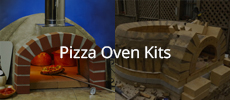Originally posted by wotavidone
However, I brought that up because you mentioned using SC as the structural slab, and a lot of them are exposed in the wood storage area. There are other cases where the edges of the slab could be in direct contact with a wall or natural structure, like a rock ledge (sharkey) were moisture could permeate the slab. And since this forum is used as a reference, it is worth considering the use of corrosion resistant reinforcement.







 I did take out the insurance step of putting a layer of vermicrete under my floor bricks though.
I did take out the insurance step of putting a layer of vermicrete under my floor bricks though.
Leave a comment: